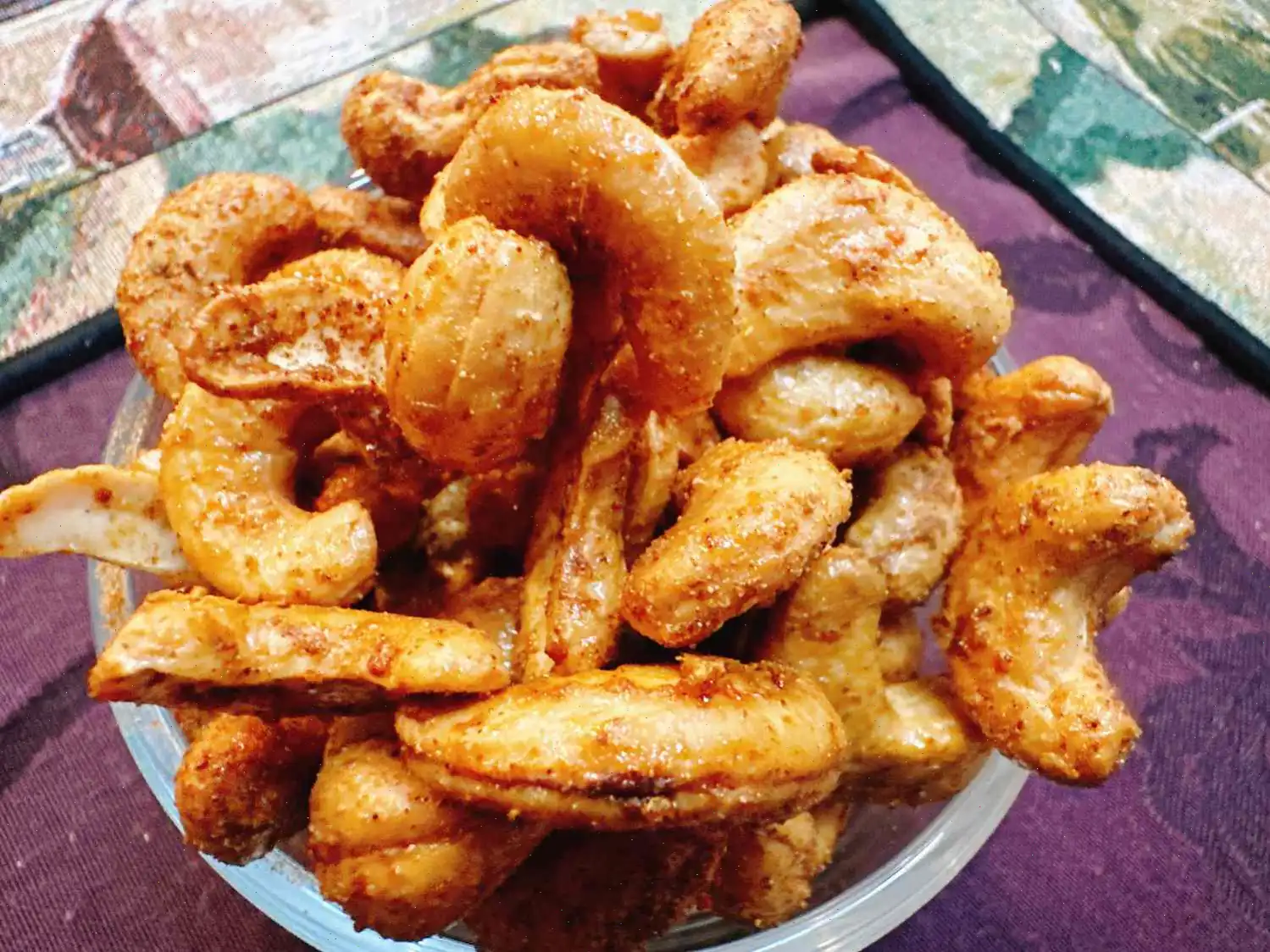
Bologna Sliders with Fried Onions Recipe
Slider Rolls with Bologna and Fried Onions
Original Recipe Yield: 8 servings
Ingredients:
- 8 slider rolls
- 8 teaspoons yellow mustard
- 8 dill pickle slices, or more to taste
- 2 teaspoons olive oil
- 1 large onion, halved and thinly sliced
- 4 (1/4-inch-thick) slices deli bologna, quartered
Directions:
- Start by slicing the slider rolls in half horizontally. Spread 1 teaspoon of mustard on the bottom of each roll, then place a pickle slice on top. Set aside.
- In a large skillet, heat 2 teaspoons of olive oil over medium heat. Add the sliced onions and cook for about 1 minute until they begin to soften.
- Add the quartered bologna slices to the skillet. Continue cooking, stirring occasionally, until the onions are tender and translucent, and the bologna is browned on both sides. This should take around 3 to 4 minutes.
- Place 2 bologna wedges on top of each bottom bun, then top with the fried onions.
- Cover with the tops of the slider rolls and serve while warm.
Cooks Note:
If preferred, you can cook the bologna slices whole, making sure to cut slits around the outside edge to prevent curling. Once cooked, cut the slices into four wedges. This recipe calls for wedges because the edges get crispy, but the choice is yours.
Nutrition Facts (per serving):
- Calories: 196
- Fat: 7g (8% Daily Value)
- Saturated Fat: 2g (9% Daily Value)
- Cholesterol: 8mg (3% Daily Value)
- Sodium: 485mg (21% Daily Value)
- Total Carbohydrate: 27g (10% Daily Value)
- Dietary Fiber: 2g (6% Daily Value)
- Total Sugars: 5g
- Protein: 7g (15% Daily Value)
- Vitamin C: 2mg (2% Daily Value)
- Calcium: 106mg (8% Daily Value)
- Iron: 2mg (11% Daily Value)
- Potassium: 149mg (3% Daily Value)
* Percent Daily Values are based on a 2,000 calorie diet. Your daily values may be higher or lower depending on your calorie needs.
The Story Behind Bologna Sliders with Fried Onions
Bologna sliders with fried onions have their roots deeply embedded in Midwestern American cuisine. Bologna itself, a type of cooked sausage originally inspired by the Italian mortadella from Bologna, Italy, became widely popular in the United States in the 20th century due to its affordability and versatility. The slider variation, featuring small rolls, emerged as part of the American love for bite-sized, casual comfort foods. Combining the fried, slightly caramelized onions with the savory bologna adds a layer of flavor that transforms this simple sandwich into a nostalgic treat reminiscent of family gatherings and local fairs.
Regional Variations
In the Midwest, fried bologna is a beloved staple, often served on white bread with mustard, pickles, or cheese. Variations can be found in other regions: in the South, it may be accompanied by barbecue sauce or hot sauce, while in parts of the Northeast, it can be served alongside coleslaw or potato chips. The size of the sliders and the thickness of the bologna slices can differ, but the key characteristiccrispy edges from fryingremains consistent across regions.
What Makes It Unique
While many sandwiches feature cold cuts or fried meats, bologna sliders stand out for their combination of simplicity, nostalgia, and flavor. Unlike traditional bologna sandwiches served cold, these sliders are warm, with the onions adding sweetness and texture. They are distinct from mini burgers, which rely on beef patties and often include a more complex layering of toppings, because the bolognas uniform flavor and thinly sliced nature allow the caramelized onions to shine.
Where They Are Served
Bologna sliders are commonly found at casual gatherings, sporting events, potlucks, and family cookouts. They are also a popular snack in Midwestern diners and local bars, often paired with cold beer. Their small size makes them ideal for sharing, and they are perfect for game-day menus or buffet-style meals where bite-sized portions are preferred.
Interesting Facts
- Fried bologna sandwiches gained fame during the Great Depression as an affordable comfort food.
- The crisping of the bologna edges is a secret to enhancing flavor, making it taste richer than when served cold.
- Some Midwest enthusiasts even dip the bologna wedges in a light coating of flour before frying to increase the crunchiness.
- The sliders popularity has inspired creative variations, such as adding cheese, spicy mustard, or even a touch of barbecue sauce for modern twists.
- Despite its humble origins, the dish has a devoted following and has been celebrated in regional food festivals as an emblem of Midwestern culinary heritage.
FAQ about Bologna Sliders with Fried Onions Recipe
Comments
Aaron Williams
08/02/2023 04:29:25 AM
I've learned to approach tasks in segments due to having Lupus, which is how I ended up merging similar recipes into one. Utilizing homemade rye bread and sliced deli bologna that I had on hand, I followed the instructions to create a delicious dish. However, I decided to add my own twist by melting baby Swiss cheese on top of the bread along with onion and meat, then grilling it in a frying pan with garlic seasoning. I whipped up a sauce using dill relish, spicy mustard, a hint of ketchup, and mayo, spreading it on one slice of bread and the meat mix on the other. To finish it off, I added a slice of tomato with a drizzle of Good Seasons Italian dressing. For my husband, I prepared two open-faced sandwiches, and the result was absolutely fantastic!
Patricia Clark
10/23/2023 11:12:03 AM
Being from the midwest, we're used to fried bologna being a staple, but these little treats really exceeded our expectations. I wouldn't make any changes - appreciate you sharing the recipe.








